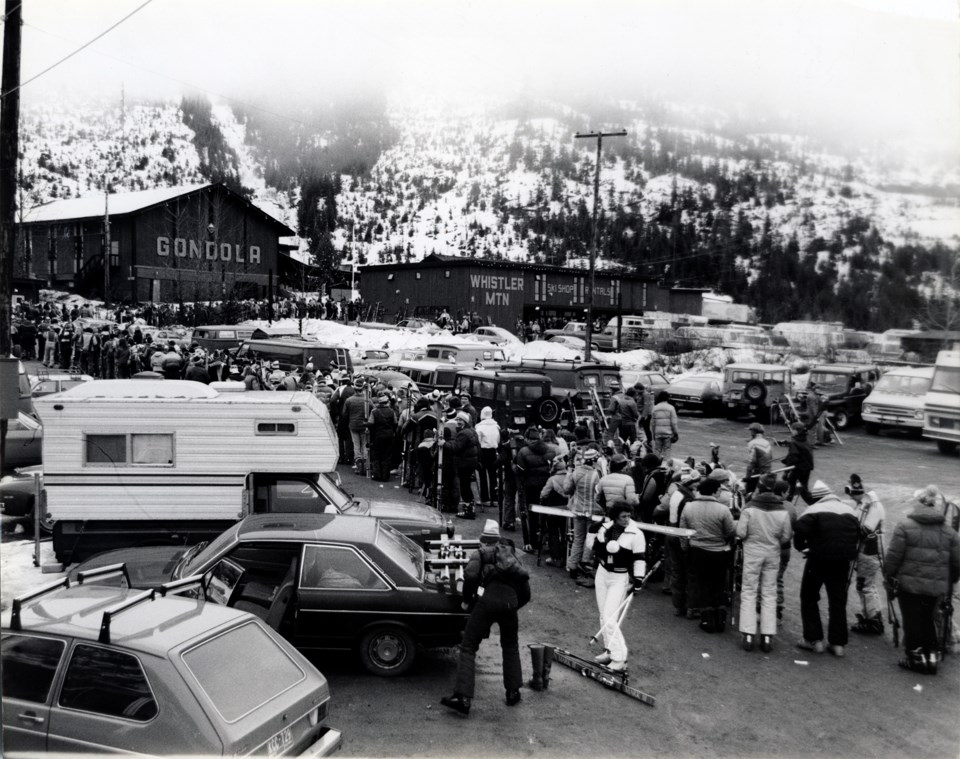It’s not unusual, as we approach the reopening of the lifts each November, to hear conversations about the coming winter: what to expect, what is new, and what is different. In its fall 1973 issue, Garibaldi’s Whistler News (GWN), the publication put out by Garibaldi Lifts Ltd., tried to anticipate such questions and provide some answers. So, what could skiers (it would be another 16 years before snowboarders were welcomed on Whistler) expect of Whistler Mountain 50 years ago?
GWN began with the announcement that all lift rates would remain the same as the previous season. This meant an adult skier could expect to pay $155 for an annual pass (just over $1,000 when adjusted for inflation), while day rates ranged from $5 half days to $7 weekend days. Annual passes could be purchased by cheque if accompanied by two passport-sized photographs or in person at the ticket office, where photographs for passes were taken free of charge. With this pass, skiers could access over 20 runs and eight lifts.
Skiers familiar with the terrain on Whistler Mountain would notice changes to some of the runs after a major summer works program. On Upper and Lower Franz’s, $10,000 had been spent widening a more-than-two-kilometre stretch from 15 to 45 metres wide. Blasting on the Downhill run had completed the leveling and grooming of certain pitches. Around the Green Chair, the lift line had been widened in anticipation of installing another parallel lift for the 1974/75 season. The lift company had also enlarged and upgraded the kitchen facilities at the Roundhouse, as well as installing a concrete floor.
For skiers new to the Whistler Mountain area, GWN provided a guide on “How to Handle a Big Mountain.” According to the guide, “Whistler is a huge, friendly, thoroughly enjoyable ski mountain, but for some skiers, seeing it for the first time, it’s overpowering,” and so they provided “hints” and tips to make it more approachable.
According to GWN, the first thing to do was to check the weather conditions on the weatherboard located next to the ticket office. Then, it was recommended that skiers familiarize themselves with the international trail marking signs used to indicate the difficulty level of a run (the same green circle, blue square and black diamond that you’ll see today), before heading up the Gondola or Olive Chair to the Red or Orange chairs. GWN suggested Whiskey Jack, Ego Bowl, Pony Trail, and Olympic Run as the first runs to try out, though those who headed down Olympic Run needed to check the bus schedules at the Information Booth to ensure they got a ride back to the lifts.
The guide also provided tips on where to eat lunch (the Roundhouse or L’Apres, both owned by the lift company), where to find information on the mountain, and which runs to take at the end of the day. One piece of advice they included, which is often repeated today, was to “bear in mind that most ski accidents happen late in the day—so don’t take that last extra run when you’re tired.” While GWN didn’t instruct skiers to expect long lineups, bad traffic, or less than optimal conditions (not surprising in a publication intended to promote the ski area), experienced skiers would have known that those were possibilities.
Those who head up Whistler Mountain this winter will find that a lot has changed over the past 50 seasons, from opening new facilities to merging with Blackcomb Mountain to adapting to changing weather conditions.





